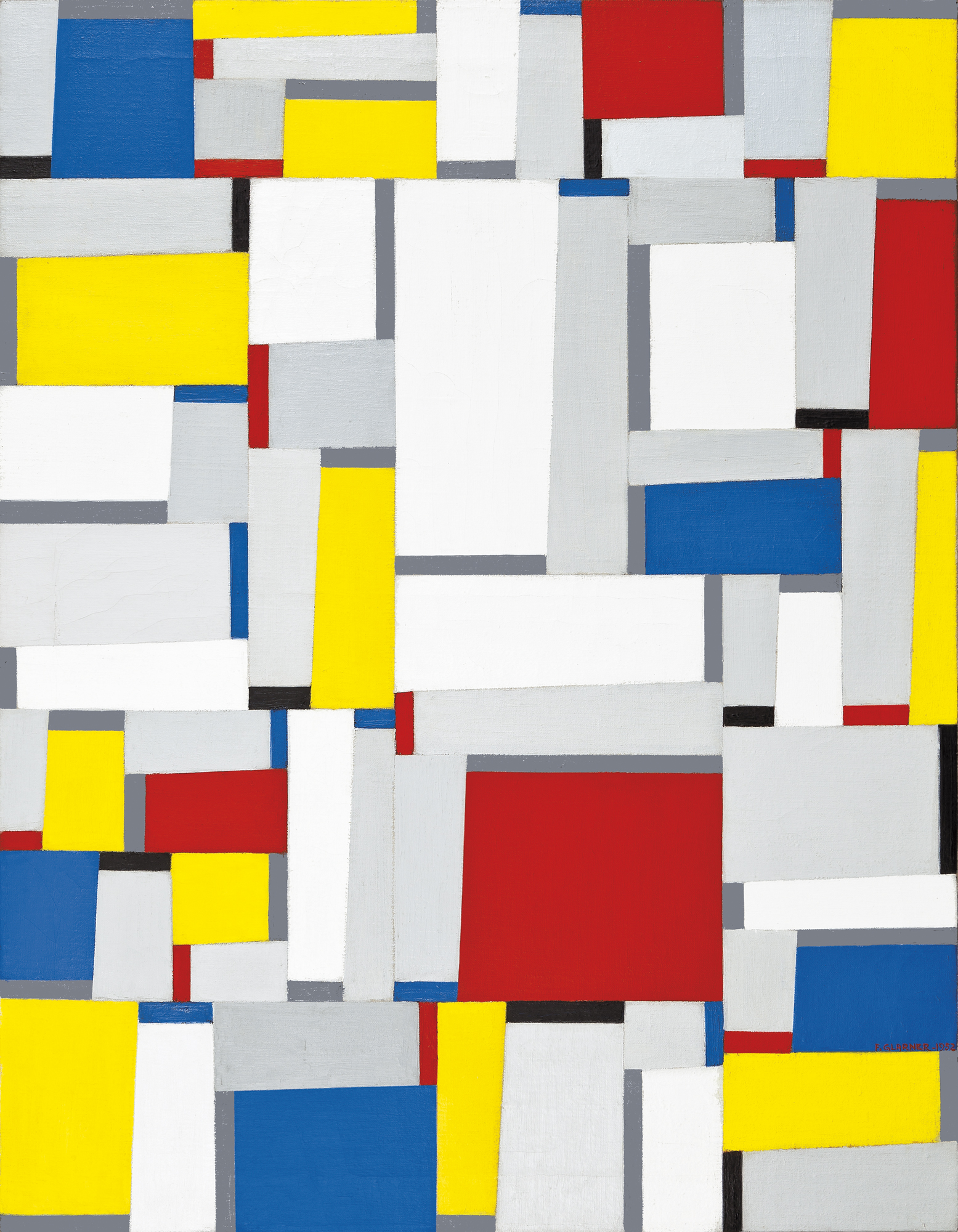Born in Zurich, Fritz Glarner settled in Paris in 1923, where he discovered Cezanne’s works, frequented the Delaunays and actively participated in the Abstraction-Création movement. He emigrated to the United States in 1936 and decided to settle in New York, where he obtained American citizenship in 1944, and where he began exhibiting his works – at that time conceived in a new, simplified language. He quickly joined the American Abstract Artists group. He returned to Switzerland in 1971, where he died the following year.
In New York, Glarner became a fervent disciple and close friend of another expatriate, Piet Mondrian, whose theories about “dynamic equilibrium” profoundly influenced him. From then on his formal studies belonged to an extension of Neo-Plasticism, whose precepts he nevertheless interpreted freely. He distanced himself from the rigid geometric aesthetic of his mentor by developing his Relational Paintings within a composition system based on oblique and irregular lines. Always with a great economy of means and a chromatic palette reduced to the basics, the composition was henceforth structured in a more intuitive way, producing an impression of dynamism and depth, accentuated even more by the painter’s fairly free brushstrokes. From 1944, Glarner also exploited his new “relational” principles, which would henceforth constitute his signature style, within the curved boundary of the circle, in a series of tondi.
A diligent painter, Glarner also focused a lot on drawing, where his research into dynamism was clearly expressed. Among his murals, which supplied him with huge spaces of expression, we can include the dining room of the Rockfeller’s apartment in New York, an original and rare example of interior design, now held at the Haus Konstruktiv in Zurich. Fritz Glarner’s oeuvre is represented in New York (MoMA and Whitney Museum), Buffalo (Albright-Knox Art Gallery), Paris (MNAM), at the Kunsthaus in Zurich, as well as in other Swiss museums.
In New York, Glarner became a fervent disciple and close friend of another expatriate, Piet Mondrian, whose theories about “dynamic equilibrium” profoundly influenced him. From then on his formal studies belonged to an extension of Neo-Plasticism, whose precepts he nevertheless interpreted freely. He distanced himself from the rigid geometric aesthetic of his mentor by developing his Relational Paintings within a composition system based on oblique and irregular lines. Always with a great economy of means and a chromatic palette reduced to the basics, the composition was henceforth structured in a more intuitive way, producing an impression of dynamism and depth, accentuated even more by the painter’s fairly free brushstrokes. From 1944, Glarner also exploited his new “relational” principles, which would henceforth constitute his signature style, within the curved boundary of the circle, in a series of tondi.
A diligent painter, Glarner also focused a lot on drawing, where his research into dynamism was clearly expressed. Among his murals, which supplied him with huge spaces of expression, we can include the dining room of the Rockfeller’s apartment in New York, an original and rare example of interior design, now held at the Haus Konstruktiv in Zurich. Fritz Glarner’s oeuvre is represented in New York (MoMA and Whitney Museum), Buffalo (Albright-Knox Art Gallery), Paris (MNAM), at the Kunsthaus in Zurich, as well as in other Swiss museums.
